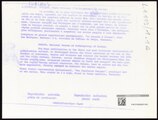File:Cultural heritage, Mexico City - UNESCO - PHOTO0000001350 0001.tiff

Original file (4,360 × 5,730 pixels, file size: 72.01 MB, MIME type: image/tiff)
Captions
Captions
Summary[edit]
| Photographer |
creator QS:P170,Q67013607 |
||||||||||||||||
| Description |
English: The picture shows a room in a museum. In the center stands tall stone sculpture which depicts manlike god. His eyes and mouth are open; his nose is pierced. The god figure is wearing a tall headdress made of feathers and costume which is decorated with many ornaments. He is wearing sandals. |
||||||||||||||||
| Depicted place | Mexico City (Q1489), Mexico (Q96) | ||||||||||||||||
| Keywords InfoField | Cultural heritage, Archaeology, Museums, Amerindian cultures, Ancient civilizations, Ancient art, Art history, | ||||||||||||||||
| Accession number |
PHOTO0000001350 |
||||||||||||||||
| Inscriptions |
English: MEXICO. National Museum of Anthropology of Mexico. The Maya civilization is the first and most brilliant civilization of precolombian culture. It developed during the first centuries of our era on the borders of Guatemala, Mexico and Honduras and reached its height between the IVth and the VIIth Century. However, social troubles stopped its development. Then the Toltec people came, conquered central Mexico by force and occupied the main part of the region during several centuries. The Aztecs, last to arrive and who ware more aggressive, finally managed to dominate the entire region. Stone statue representing Quetzalcoatl, “The Feathered Serpent”, principal god of the Aztecs. This statue is 3 m high. Found in Teayo Castillo, Veracruz. Français : MEXIQUE. Musée National d'Anthropologie de Mexico. La première et la plus brillante des civilisations précolombiennes, celle des Mayas, apparaft sur les confins du Guatemala, du Mexique et du Honduras au cours des premiers siècles de notre ère. Elle atteint son apogée entre le IVe et le VIIe siècle, puis des troubles sociaux mettent fin à son épanouissement. Viennent ensuite les Toltèques qui s'assurent, par les armes, la domination du Mexique central. Ce peuple a régné sur la plus grande partie de cette région pendant plusieurs siècles. Derniers venus dans l'Histoire, les Aztèques, plus belliqueux, parviennent à soumettre les autres peuples à leur hégémonie. Sculpture en pierre représentant Quetzalcoatl, “Le Serpent à Plumes”, dieu des Aztèques. Hauteur 3 m. Provient du Château de Teayo, Veracruz. |
||||||||||||||||
| Archival code InfoField | L.1119/1.1A | ||||||||||||||||
| Source |
|
||||||||||||||||
| Permission (Reusing this file) |
This file is licensed under the Creative Commons Attribution-ShareAlike 3.0 IGO license. Attribution: UNESCO / Dominique Roger
|
||||||||||||||||
| Other versions |
|
||||||||||||||||
File history
Click on a date/time to view the file as it appeared at that time.
| Date/Time | Thumbnail | Dimensions | User | Comment | |
|---|---|---|---|---|---|
| current | 23:05, 5 November 2020 |  | 4,360 × 5,730 (72.01 MB) | AliciaFagervingWMSE-bot (talk | contribs) | pattypan 20.04 |
You cannot overwrite this file.
File usage on Commons
The following 3 pages use this file:
File usage on other wikis
The following other wikis use this file:
- Usage on fr.wikipedia.org
Metadata
This file contains additional information such as Exif metadata which may have been added by the digital camera, scanner, or software program used to create or digitize it. If the file has been modified from its original state, some details such as the timestamp may not fully reflect those of the original file. The timestamp is only as accurate as the clock in the camera, and it may be completely wrong.
| Width | 4,360 px |
|---|---|
| Height | 5,730 px |
| Bits per component |
|
| Compression scheme | PackBits (Macintosh RLE) |
| Pixel composition | RGB |
| Number of components | 3 |
| Number of rows per strip | 1 |
| Horizontal resolution | 72 dpi |
| Vertical resolution | 72 dpi |
| Software used | Lavc58.54.100 |




